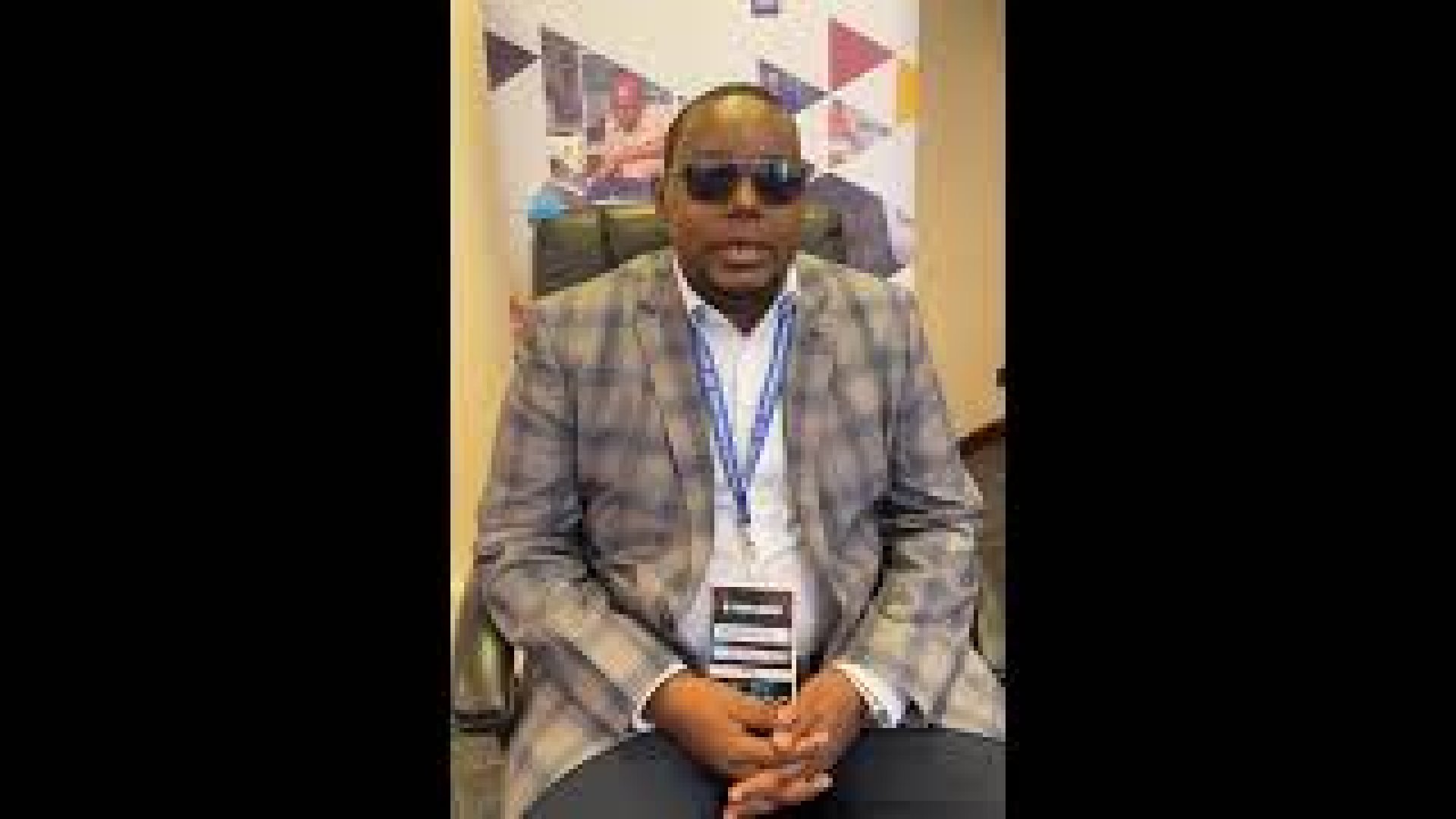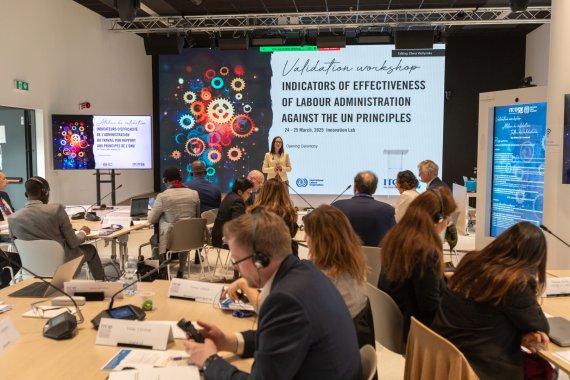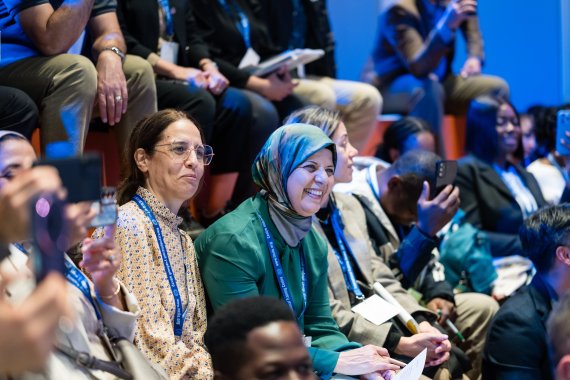Shaping Inclusive Futures of Work and AI in Kenya
Shaping Inclusive Futures of Work and AI in Kenya
From dialogue to prototypes, crafting human-centred AI innovation
1 Octubre 2025
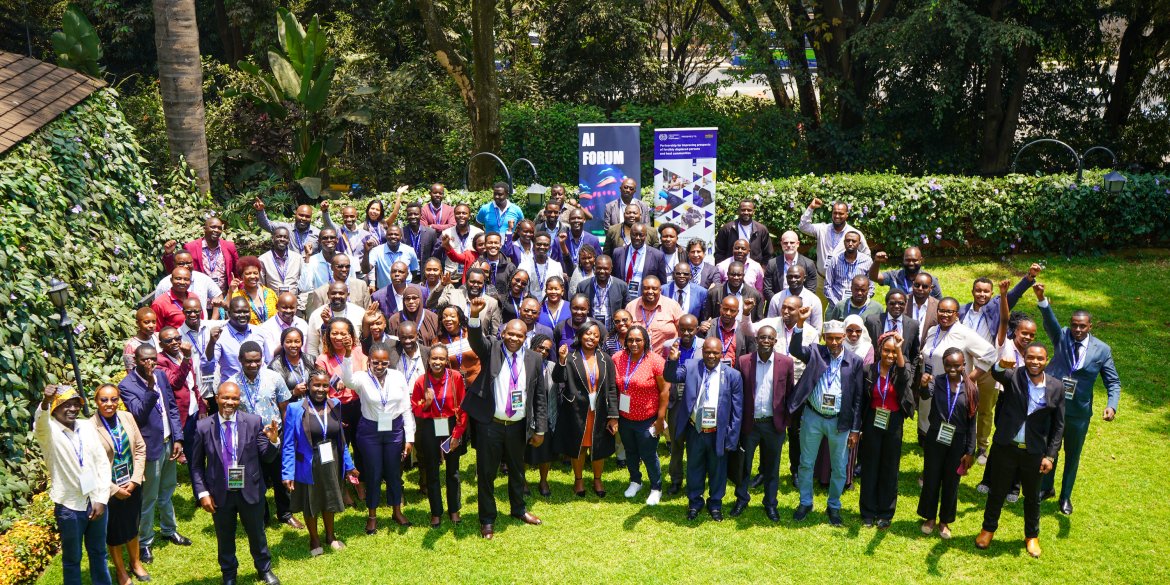
When Mohamed Sahal stepped into the conference hall in Nairobi, he immediately felt a sense of belonging. The organizers had considered his request to be accompanied by an aide, someone who could guide him through the space, translate visual content, and ensure he could follow every session. For Sahal, who is visually impaired, this simple gesture was deeply meaningful. “It gave me confidence,” he said, “because it meant I was not left out from the beginning.”
As Director of Partnerships at the County Assembly of Garissa, he wanted to understand how artificial intelligence could be applied in government processes, especially in making legislative work more efficient and accessible. He was also curious to learn how AI could be harnessed to create opportunities for marginalized communities, including persons with disabilities, refugees, women, and youth. Above all, he wanted to test for himself whether technology that is often described as abstract and futuristic could actually be functional for someone like him.
Across Africa, people see artificial intelligence as either a source of hope or a cause for concern. It could make services faster, open up fairer access, and support local solutions to old problems. But there are also real risks such as poor internet in many areas, systems that don’t work in local languages, and the chance that groups already struggling like refugees, people with disabilities, women, and young people could be pushed further to the side. For Sahal, these were not big policy debates. They were the barriers he dealt with every day.
Over the three days, from 16–18 September 2025, at the AI Forum in Nairobi organized by the ILO and ITCILO, Sahal watched his expectations take shape.In the plenary sessions, he listened to experts describe AI’s risks and opportunities, and to Kenyan policymakers outline strategies for digital transformation. In the group work carefully facilitated by ITCILO to ensure every voice counted, he sat side by side with trade unionists, entrepreneurs, educators, and innovators, debating how AI could be made inclusive rather than exclusive. What stood out to him was the carefully tailored process where he was not a mere spectator. He was invited to contribute, to challenge, to co-create.
For Sahal, the conversations around him were just as striking as his own experiments with assistive tools. As he listened, he realized that his story of seeking independence was part of something bigger, a shared search for how AI will reshape work and society. “AI has the power to make the government more transparent and more efficient,” Sahal explained. “If we use it well, it can help legislators do better research, connect policies across counties, and make sure no community is left out. But it must be inclusive. Persons with disabilities, refugees, and those in rural areas should not be left behind.” Around the tables and on the plenary stage, speakers and participants were asking the same questions in different ways, not whether AI is coming, but how it can serve people fairly, locally, and inclusively.
Positioning Kenya as a Regional Digital Hub
Kenya’s own AI journey provided the backdrop to these conversations. The country has positioned itself as a regional hub for digital innovation. Its National AI Strategy 2025-2030 sets out ambitions to harness AI across sectors from public service delivery to smart infrastructure, local data ecosystems, and ethical governance.
“Artificial intelligence represents an opportunity for Kenya to leapfrog stages of development,” said Mary Kerema, State Secretary at the Ministry of ICT. “With advanced language models and locally relevant applications, AI can amplify human intelligence, expand access to services, and even operate in our local languages breaking down barriers that have long excluded many communities.”
Yet the landscape is not without challenges. Concerns remain about infrastructure gaps, the digital divide between urban and rural areas, and the lack of localized African datasets that can make AI truly responsive to Kenyan realities. Policymakers, innovators, and workers all pointed to the need for inclusive governance frameworks that safeguard rights while enabling innovation.
This mix of ambition and caution set the tone for the discussions, and it was in this space that Sahal’s personal journey intersected with Kenya’s broader national aspirations.His search for functionality, independence, and dignity as a visually impaired professional mirrored the wider country’s search for inclusive, ethical, and locally grounded uses of AI.
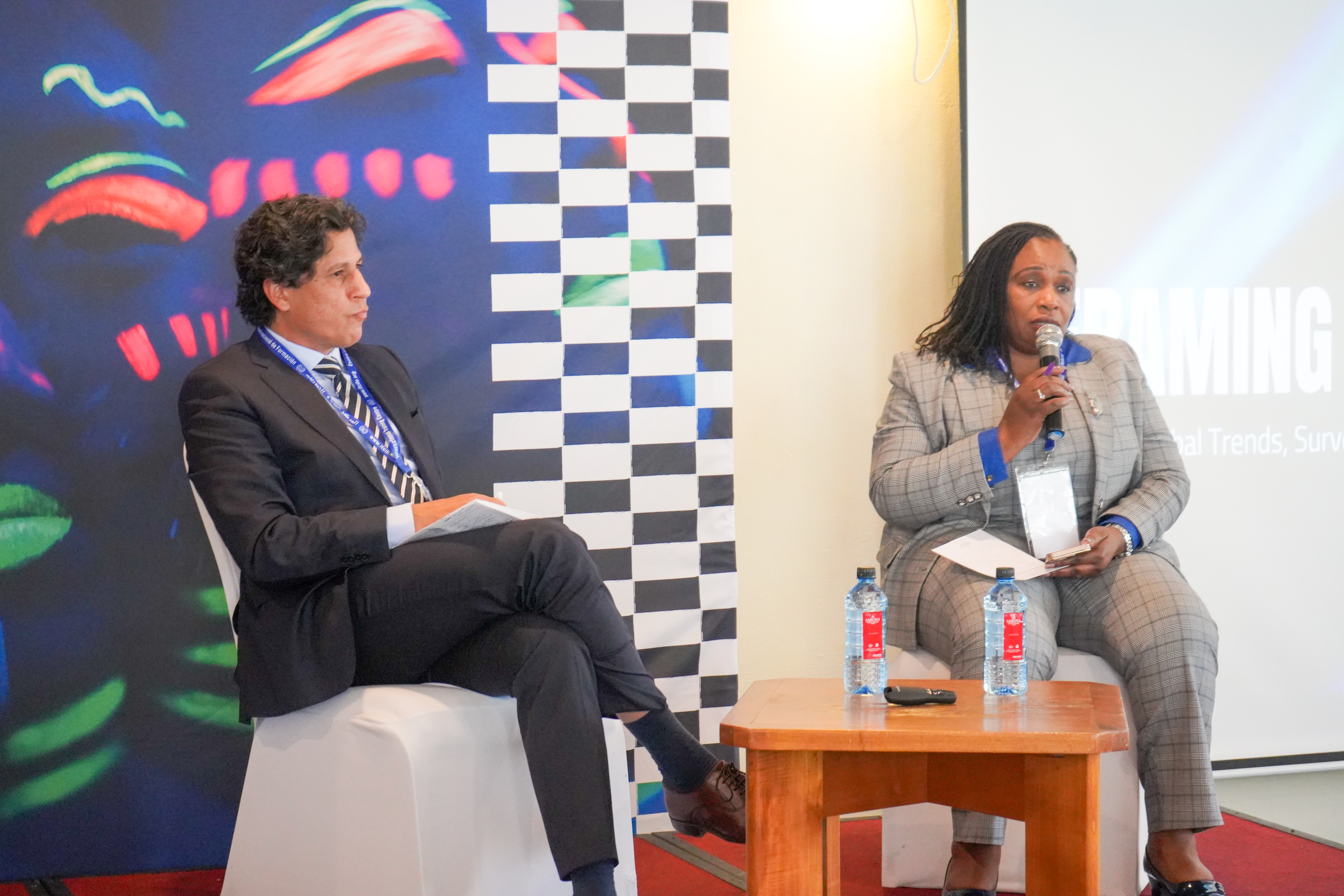
A Structured Approach to Co-Creation
Kenya, like many countries, is working to make the most of artificial intelligence while also managing its risks. Policies can set priorities, but they do not always reflect the everyday realities of underrepresented groups in the digital economy. Without spaces to bring these voices together, decisions can easily be made from the top down, leaving out those most affected. This is why ITCILO stepped in. Our role was to create a space where policymakers, workers, and innovators could come together and test ideas with the goal of turning policy ambitions into action shaped by people’s experiences.
While on stage, experts and practitioners framed issues regarding job displacement, called for African-led AI, or demanded true inclusion for refugees and persons with disabilities, participants were, at the same time, translating those insights into practice. Each plenary gave the groups new material to test, debate, and build on from questions of how to reskill workers for a changing labour market, to how to close Kenya’s digital divide, to what protections are needed for workers under algorithmic management.
When Sher Verick of the ILO urged that the real question was not how many jobs will vanish but under what conditions the remaining ones will be done, groups picked up that thread by mapping systemic challenges around labour markets, digital divides, and worker protection.
When Alice Munyua, founder of the African Women AI Network, insisted that Africa must not simply consume AI from elsewhere, groups imagined futures where Kenyan schools, hubs, and platforms were built on local languages and data. “If we don’t shape these technologies ourselves,” Alice reminded the room, “they will shape us often in ways that exclude our people.”
And when refugee and disability representatives described the barriers they face, groups began sketching prototypes for digital hubs, literacy campaigns, and inclusive policies. Later, when Microsoft’s Winnie Karanu underlined that preparing for AI means skilling at every level from school classrooms to public service careers, participants took this call directly into their designs for education and training prototypes.
This rhythm between plenary reflection and group co-creation feeding into one another gave the Forum its laboratory feel. Ideas never stayed abstract but rather, they moved quickly from the stage to the working tables, and back again.
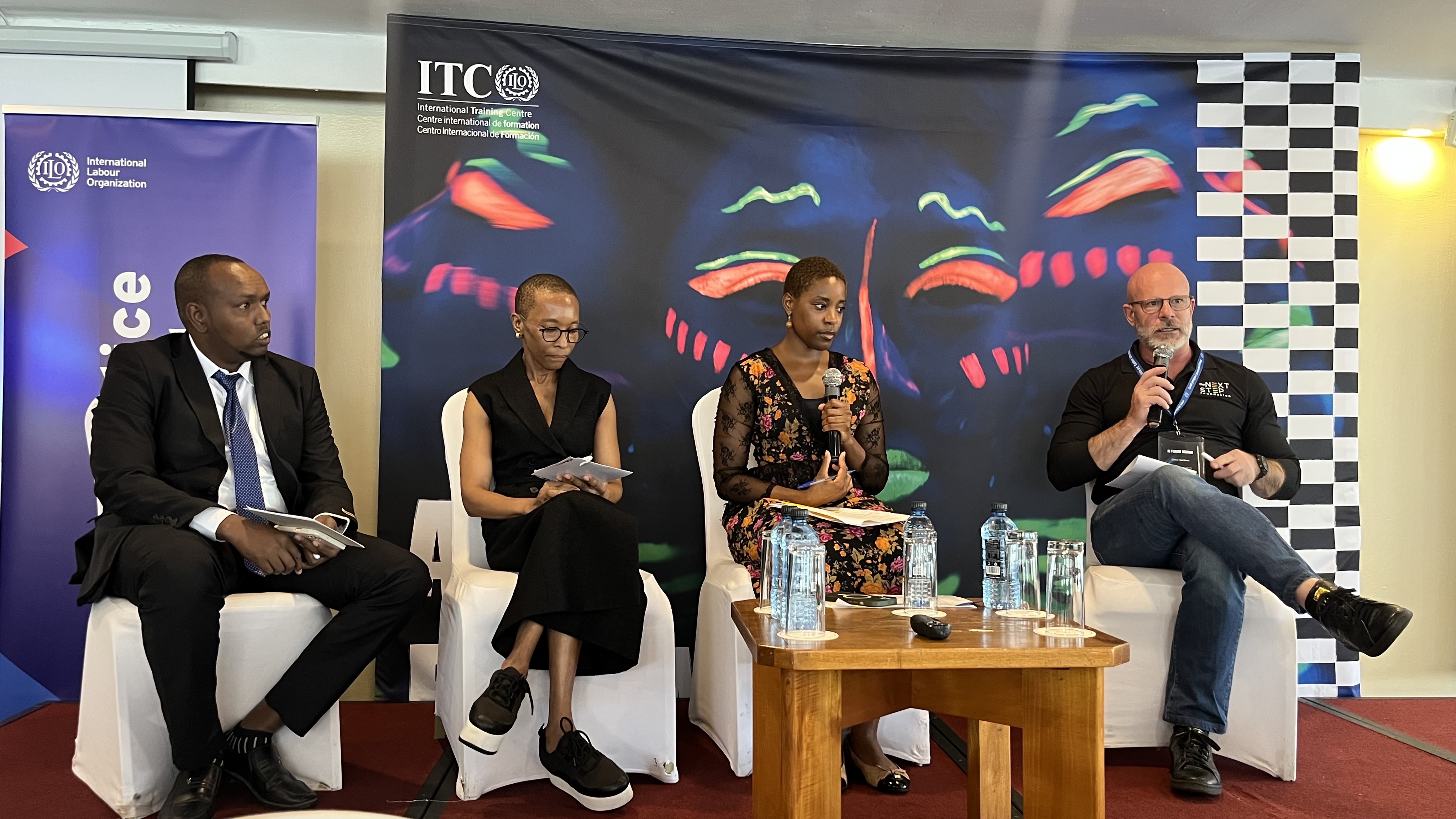
From Dialogue to Prototypes
The heart of this methodology was the 2035 visioning exercise. Each group was asked to leap forward in time and picture Kenya after its challenges had been overcome. The futures they described were vivid: classrooms powered by AI but accessible to every child, thriving rural hubs with affordable connectivity, and fair digital platforms where gig workers had rights and protections.
These visions became the starting point for reverse engineering as to what policies, investments, and collaborations would be needed to get from here to there? From this process came the solutions/prototypes. Some were policies on paper, others were sketched platforms or community projects. The solutions were not ready for instant implementation but all were tangible and maybe the first drafts of Kenya’s possible AI futures.
One group, for example, took on the education challenge. They envisioned a 2035 where schools and vocational centres were not only connected but fully AI-enabled. It encompassed a vision where teachers used digital tools to tailor learning, students accessing content in local languages, and a national framework guaranteeing equal access regardless of geography or ability. From that vision, they sketched a prototype practical enough to begin testing yet ambitious enough to inspire.
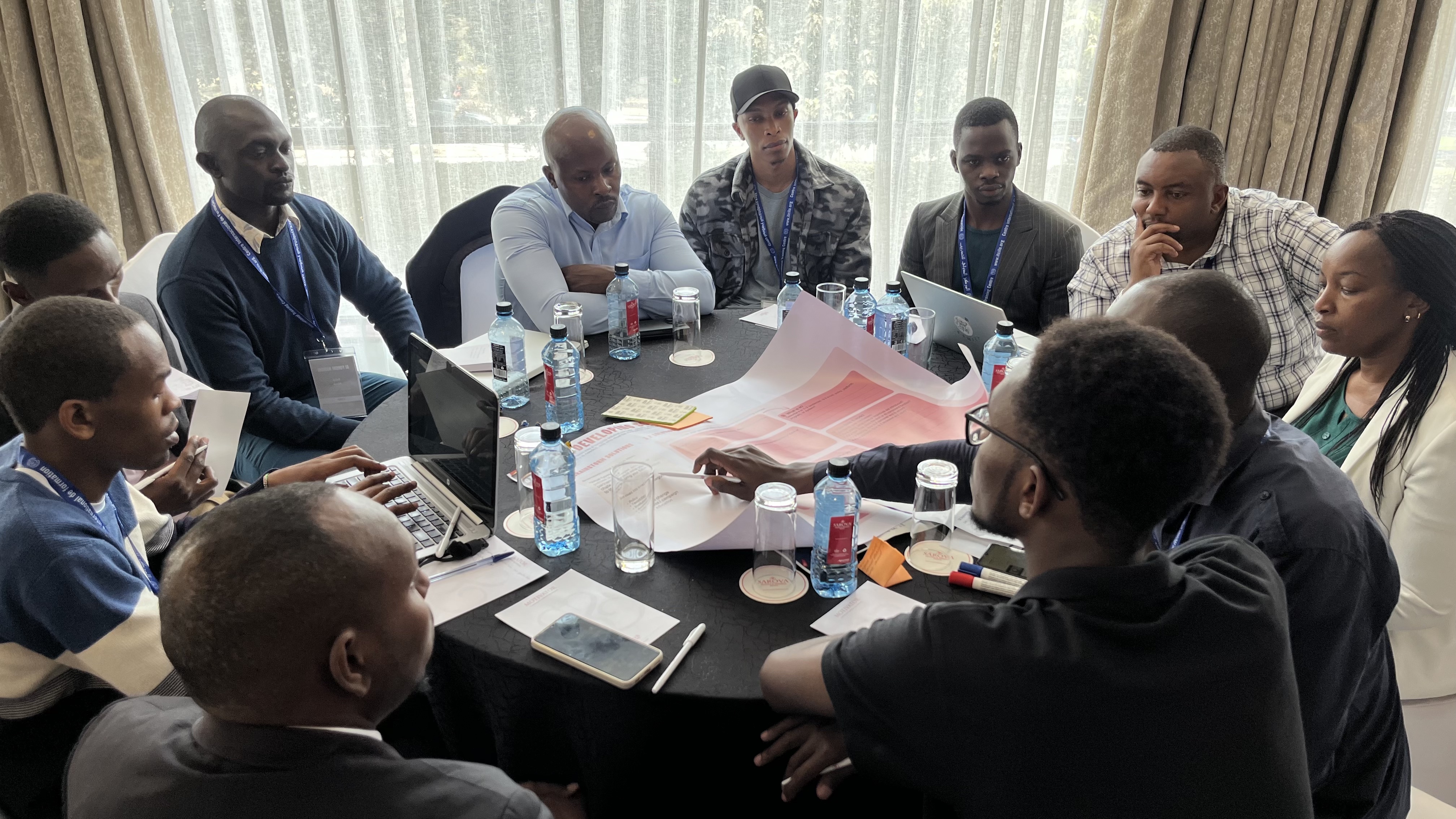
An Exhibition of Local Solutions
Alongside the plenaries and group work, the Forum opened up a different kind of space: a Share Fair exhibition. Unlike the prototype sessions, this was not about participants pitching their ideas. Instead, it was a curated selection of Kenyan organisations and vendors showcasing the AI systems and solutions they are already building.
Toolkit, Lish AI Labs, Qhala, Eversetech, Power Learn Project, Kamau Kamau, Next Step Foundation, and Bingwa were among those present. Their stands turned the conference space into a buzzing marketplace of innovation. Participants could move from one table to another, try out applications, and talk directly with developers about how these technologies might shape work in Kenya.
The Share Fair had a distinctly different energy, where the group sessions were about imagining futures, this was about seeing what is possible today. From platforms connecting informal workers to clients, to AI literacy projects, to tools designed for education and business, the exhibition grounded the discussions in tangible, Kenyan-built solutions. It reminded everyone that AI in Kenya is not a distant dream but it is already here, taking shape in local labs and startups.
Among the innovators at the Share Fair was Lewis Gitonga Muriuki, a medical student at the University of Nairobi and founder of Tosh DevWorks. Combining his medical training with skills in AI and full-stack development, Lewis created a Hospital Management System powered by AI to streamline patient registration, diagnosis support, and pharmacy management.
For him, the project is not all just about efficiency rather it is about bridging medicine and technology to improve care in Kenyan hospitals. Trained through the Power Learn Project Africa in AI and machine learning, Lewis embodies the new generation of African innovators who see AI as both a technical tool and a social mission. His system promises smarter hospitals, reduced waiting times, and data-driven decisions, all critical for a country where health facilities often face overstretched staff and resources.
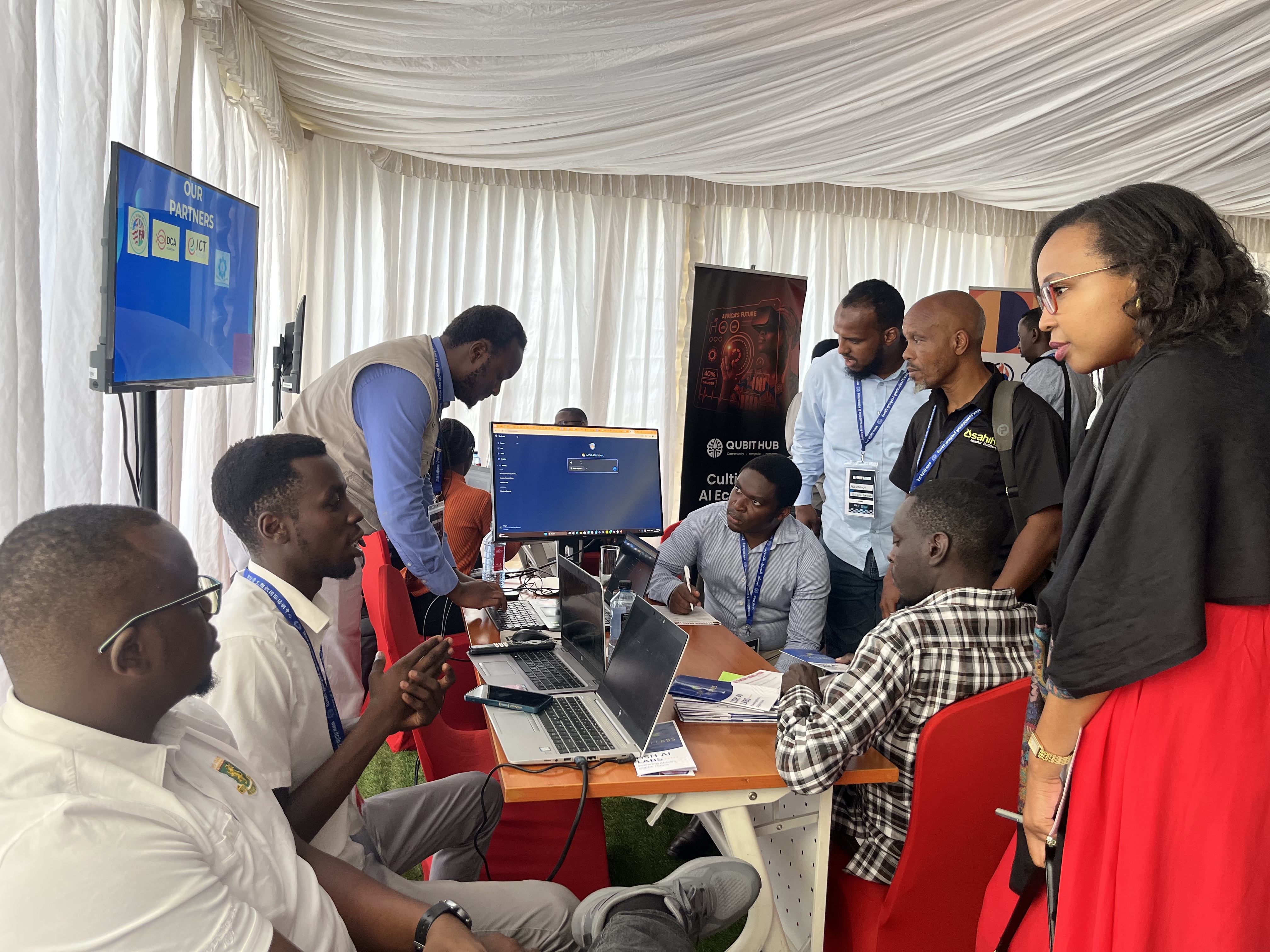
Taking the Dialogue Forward
By structuring the Forum around plenary reflections, group visioning, and a prototype exhibition, ITCILO helped to transform what could have been an abstract debate into something practical, creative, and human. The methodology proved that when diverse stakeholders are given equal space, AI becomes not only a tool for efficiency but a bridge to dignity, decent work, and social justice.
The energy in Nairobi does not have to remain in Nairobi. The ITCILO’s model of dialogue and co-creation is designed to travel. Every country grappling with questions of AI and the future of work can adapt this participatory approach to its own realities.
With its trainers, facilitators, and international expertise, ITCILO can help to:
- Create spaces for curiosity and creativity through practical workshops.
- Bring together local actors, governments, and partners to balance innovation with people’s rights and protections.
- Strengthen the capacity of workers, employers, and institutions to navigate digital transitions.
- Share lessons and stories in ways that keep people at the centre and inspire continued dialogue.
The Nairobi Forum was a first step. The conversations and prototypes developed there can guide future efforts in Kenya and beyond, showing how inclusive digital futures of work can be built together.
